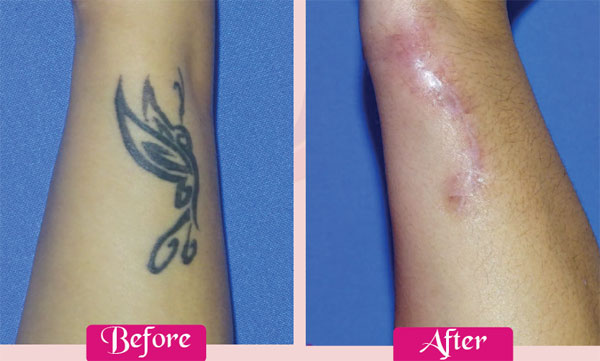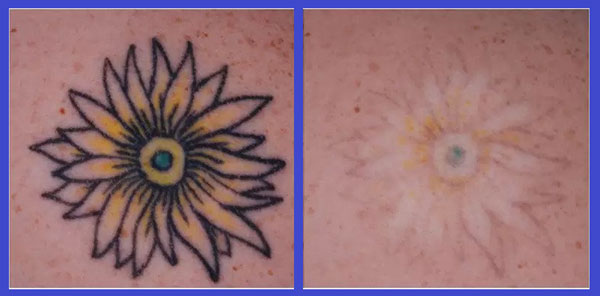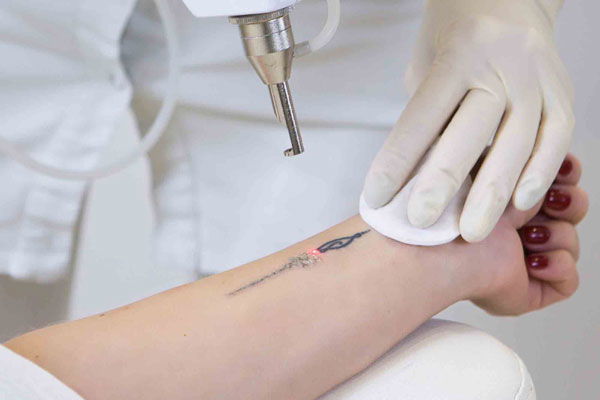Tattoo Removal
Our process of removing a tattoo is far from the painful, stressful experience many make it out to be. In fact, Elegance Clinics our focus is to ensure your maximum comfort and satisfaction with this specialized treatment. To better understand what goes into tattoo removal, we should explore what goes into this long-lasting dermal art.
Chemical makeup of tattoos
The chemical makeup of tattoos hasn’t changed much over the course of history. They still consist of thousands of small pigments of permanent ink, which are injected into the dermis.

However, the reason they remain visible until professionally removed is that these particles of ink pigments are far too large for the body to naturally remove them. If you get a tattoo, it will remain there indefinitely.
When it comes to tattoo removal, no longer do you need to show your skin with regret. Elegance Clinics has the innovative technology and professional experience needed to ensure the results you deserve.
- Allergic reactions
- Regrets about the decision – change of girlfriend/boyfriend, marriage.
- Seeking or obtaining new employment
- Replacing one tattoo with another
Tattoo consists of thousands of particles of pigment suspended in the skin. Laser tattoo removal works on the principle of Photothermolysis. Treatment works by using a high-powered, short pulsed beam of light, which is delivered at highly precise wavelengths to the dermis. This energy is selectively absolved by tattoo ink particles without damaging the normal surrounding skin tissues and their temperature rises to thousand of degrees and the tattoo pigment is fragmented.

These small fragments of pigment will be absorved by body’s own cells called macrophages by the process called Phagocytosis. With continued treatment over multiple sessions, the tattoo will either fade or completely disappear as your body gets to work, with extra sessions likely necessary to eliminate more complicated, larger designs.
The number of sessions required to remove a tattoo depends on the size, color, density, and depth of ink. Due to different types of inks used in tattooing, the results and the number of treatments may vary. On average the patient will need 6-10 treatments spaced 6-7 weeks apart to allow time for clearing. After each treatment session patient will see the tattoo become lighter. Red colour responds lesser than the Black and Blue pigments. The best candidate for laser tattoo removal are those patients with light or dark skin with unwanted tattoos that need to be drastically reduced or partially lightened to allow for re-inking. Patients who are pregnant or breastfeeding will not be treated with the laser.

Laser tattoo removal is fast and can be uncomfortable. To minimize discomfort, a topical or injectable anesthetic is available and recommended. The feeling of the laser pulse has been described as being snapped by a rubber band sensation. When treatment complete, a scab forms on the area treated and can last for up to 2-3 weeks. Redness, crusting and itching are expected after each treatment.
The results can be life changing. Whether you want to remove just a name of someone who is no longer in your life, several tattoos or just lighten body art for the purpose of re-inking, Doctor has the technology and experience that you are looking for for this service. Our plastic surgeon, Dr. Sanchit Garg, will help you get on the way to the new look you have in mind!
Laser Tattoo removal takes about 6 to 12 months for results to appear. Surgical tattoo removal removes the Tattoos faster. The procedure is done under Local Anesthesia. The resultant skin defect is either closed by suturing the edges together or is skin grafted if the defect is bigger to be closed with sutures. Only disadvantage of the procedure is a resultant scar though a thin line. The grafted skin usually looks different than the surrounding original skin.


